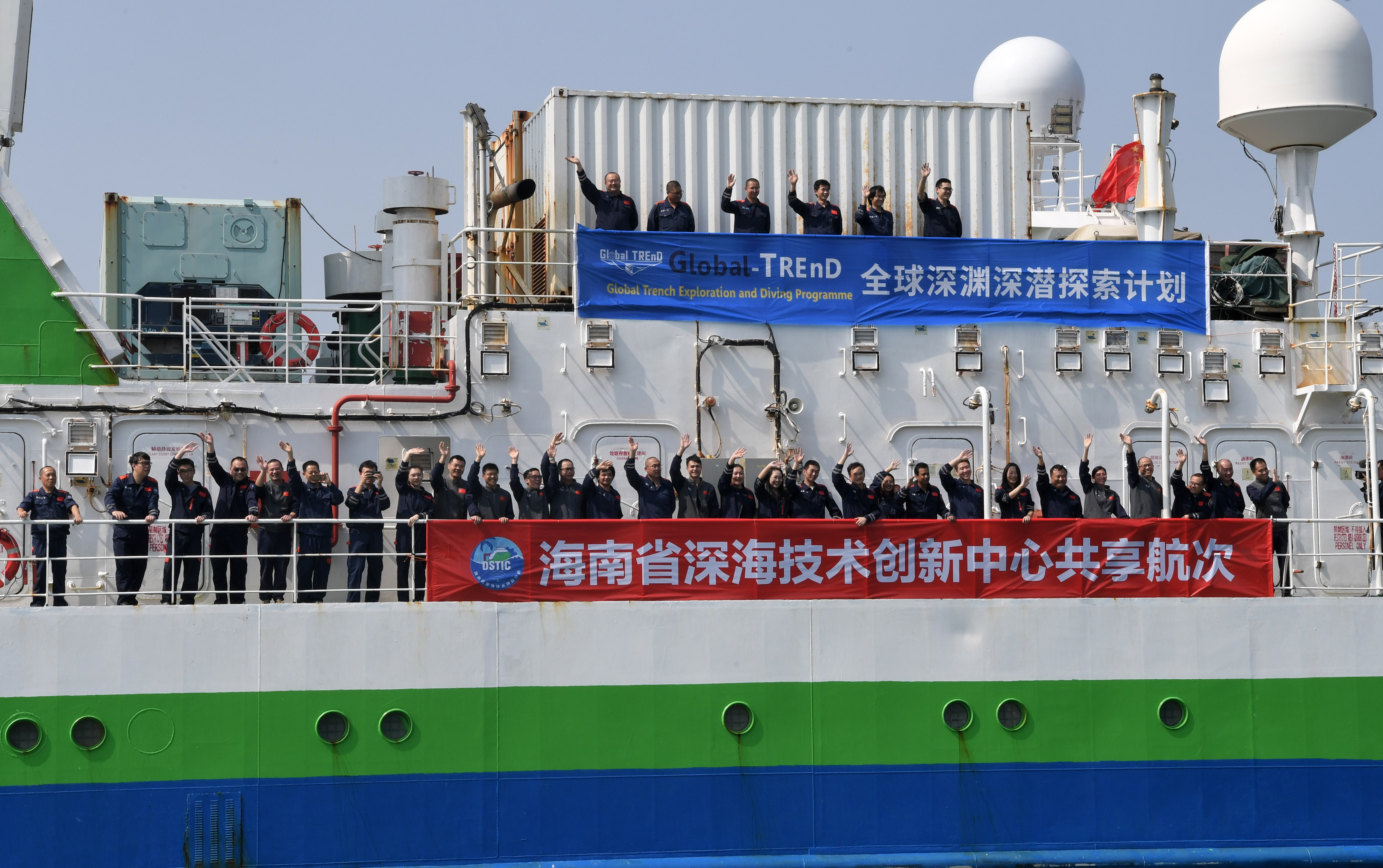Exploring and Protecting Our Oceans
Scientific research ship Tansuo-1, carrying the deep-sea manned submersible Fendouzhe (Striver), arrives in Sanya, south China's Hainan Province, March 11, 2023. (PHOTO: XINHUA)
By LU Zijian
To build China into a maritime power has not been possible without the modern era backbone of science and technology. From exploring the deepest spot on Earth and making use of oceanic resources, to protecting the oceanic environment, China has found its own way to carry out these achievements.
Deep into the sea
On November 10, 2020, China's deep -sea manned submersible Fendouzhe, set a national record by diving to a depth of 10,909 meters in the Mariana Trench, the world's deepest natural trench in the western Pacific. "This is impressive even by global standards," said Hu Zhen, deputy chief designer of the submersible.
The journey of Fendouzhe did not end there. On January 22, the vessel completed operations at the deepest point of the Diamantina Trench in the southeastern Indian Ocean, and was successfully retrieved by the scientific research ship Tansuo-1. This was the first time in human history for a vessel to reach the deepest point of the Diamantina Trench.
To date, Fendouzhe has dived more than 60 times, with many of the depths exceeding 10,000 meters. In total, Fendouzhe and China's two other deep-sea manned submersibles Jiaolong and Shenhai Yongshi, have made nearly 1,000 deep dives.
China has also been active in cooperating with other countries in deep sea exploration. A joint China -New Zealand deep-sea expedition took place in November 2022 using Fendouzhe, which dived several times in the Kermadec Trench in the Pacific Ocean, with two of the diving depths surpassing 10,000 meters.
This was the first time in the world that large-scale and systematic manned deep diving surveys in the Kermadec Trench had been carried out. The samples collected provided crucial support for understanding the evolution and adaptation mechanisms of life in an abyss and the evolution of the sedimentary environment of the abyss.
Making use of oceanic resources
The ocean is equipped with abundant resources, and could greatly support human life if properly developed.
Nicknamed flammable ice, methane hydrate is regarded as an ideal clean energy substitute. It is also efficient, as a car could drive 50,000 kilometers on 100 liters of methane hydrate, a huge leap from 300 kilometers on 100 liters of natural gas. In addition, China has the largest reserve of methane hydrate, which means abundant exploration prospects.
Hainiu II, China's self-developed deep-water drilling rig system, managed to dig a world record of 231 meters into the seabed at a depth of over 2,000 meters in the South China Sea on April 7, 2021. The success of Hainiu II made it much easier to explore methane hydrate, while preserving the proper temperature and pressure deep under the sea.
Resources above the sea should not be ignored. The sea wind is extremely powerful and making good use of it could bring an enormous amount of clean electricity.
The world's largest 16-megawatt offshore wind turbine rolled off the production line in Fujian province on November 23, 2022. When operated under standand running conditions, the turbine could generate clean energy of over 66 million kWh per year, satisfying the electrical need of 36,000 three-person households, saving standard coal usage of nearly 22,000 tons and reducing CO2 emissions by 54,000 tons.
Protecting the oceanic environment
Oceans have already been severely damaged through human negligence. Marine development will not be sustainable if it are not strictly preserved and protected.
Clearing the vast quantities of ocean garbage, especially plastics, is one of the key tasks in improving the oceanic environment.
In 2021, researchers from the Institute of Oceanology at Chinese Academy of Sciences discovered a marine bacterial community capable of efficiently degrading plastic wastes. After cultivation, the bacteria could degrade plastic waste into pieces within only two weeks.
A pilot program focusing on plastic ocean garbage was conducted in Taizhou, Zhejiang province last year. More than 20 international environmental protection organizations, universities and leading global enterprises are cooperating to drive the program.
For only three months, the program had collected 1,560 tons of ocean garbage, of which 1,270 tons was plastic, cutting carbon emissions of nearly 5,000 tons. If the program was to include ocean water off the entire Zhejiang province coastline, there would be 18,000 tons of sea plastic garbage collected per year, reducing carbon emissions by 72,000 tons.
Development and protection of the ocean are both important, and require equal effort from humanity as a whole.



